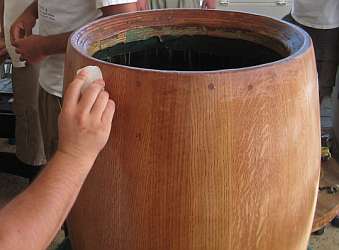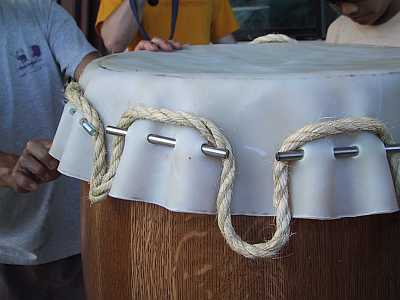|
The process to make the head of a taiko usually involves a first and second soak, each followed by what are often called the first and second stretches. However, the "first stretch" is misleading, because while it uses the stretching equipment, the goal is not to stretch the drum tightly, but to form the skin into the shape of a drum head. The real stretching to tighten the head is done in the second stretch.
Therefore, the goal of this stage is not to get a nice, high pitched drum right away: since you will be taking the head off after it dries, any tension on the head will be lost anyway. Instead, focus on making sure the skin lies evenly across the drum head and is under even tension on all sides. The skinning stand used by Zenshin Daiko differs from the most common style of stand, but it makes control over the tension in the head very easy. This guide assumes you have something similar to the Zenshin stand.
|

 Introduction
Introduction
 History
History
 Process
Process
 Thank Yous
Thank Yous







